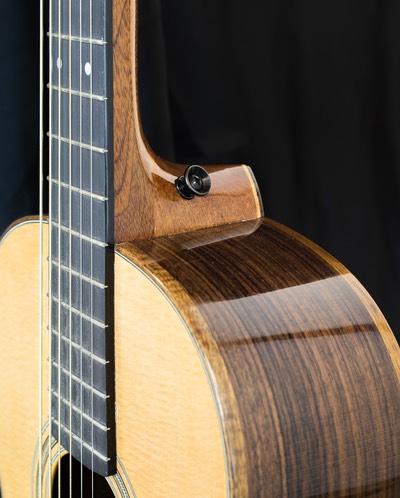Perhaps no other instrument has more sizes and configurations than the guitar. Six strings, 12 strings, steel strings, nylon strings and a variety of sizes. It’s also a “ sexy” instrument because it’s one of the few instruments that is held close to your body where the instrument’s soul can be felt through transmitted vibrations.
If one steel string guitar could be described as “typical”, it would be the large dreadnought size that became popular during the folk era when musicians were looking for more sound than was provided by the concert guitars avaible at that time. C.F. Martin & Company became synonymous with the dreadnought and continue to offer legendary guitars such as the D-28, D-35, D-45, and others. 6-string and 12-string variations remain the guitars of choice for many professional musicians.
PFI Dreadnought Guitars
Parlor and Concert Guitars
Over the years I’ve been gravitating to smaller size steel-string instruments such as the parlor and concert guitars. Personally, I find them easier to play because they fit me better and the sound is perfectly adequate for small rooms where the booming sound of a dreadnought can sometimes be more hinderance than help. This is particularly true when playing in mixed ensembles with dulcimers and mandolins.
Classical Guitar
I’ve built several classical guitars based on the Hauser 1973 Segovia design that were finished using the traditional French polishing method of applying shellac.
Finishes
Other than classical guitars (and dulcimers), all my instruments are finished with lacquer. Most often this has been nitrocellulous instrument lacquer, a durable, easily repaired finish. Lately, however, I’ve been getting away from nitro and working more with less-toxic waterborne lacquer. Over the past few years, waterborne finishes have improved to the point where they now provide a viable alternative to nitrocellulose.
